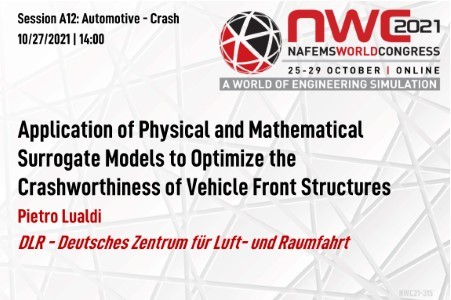
Abstract
Exploiting the full potential of lightweight materials and weight reduction techniques while preserving the high safety standards of a vehicle still remains one of the major challenges in the field of crashworthiness design. Such a problem, already challenging from a qualitative point of view, is also hard to be solved numerically due to the computational costs related to crash simulations of full FEM vehicle models. This factor represents also a real limitation in the field of optimization of vehicle crash structures. It is especially challenging, if load cases are investigated, which additionally involve complex impactor models such as deformable impact barriers, which are required for the certification of vehicles. Only by the use of simplification strategies and physical surrogate models the computational costs can be reduced in a way to make crashworthiness problems for cars suitable for structural optimization. Additionally, the application of mathematical surrogate models can efficiently improve the possibility to find suitable structural solutions in the respect of given design requirements compared to conventional optimization approaches. In this paper, the Urban Modular Vehicle (UMV), i.e. a battery-driven modular car concept developed by the German Aerospace Center (DLR) is investigated to improve its crash performance in the event of a front crash using physical and mathematical surrogate models. The NCAP - Mobile Progressive Deformable Barrier (MPDB) crash load case is considered as frontal crash scenario. A physical surrogate model will be used to replace the detailed crushing behavior of the MPDB model by means of kinematic descriptions. The finite element vehicle model is also simplified in a way that structural components which are assumed to only bear elastic deformations are replaced by kinematic numerical representations describing the substituted structures. Finally, a design optimization strategy based on mathematical surrogate models is successfully applied to optimize the absorption properties of the crash relevant vehicle structures. For the optimization appropriate constraint functions are included to ensure that any applied structural change does not undermine the safety requirements of the passengers. Only with these applied simplification strategies optimization can be applied to such a complex crash load case.



